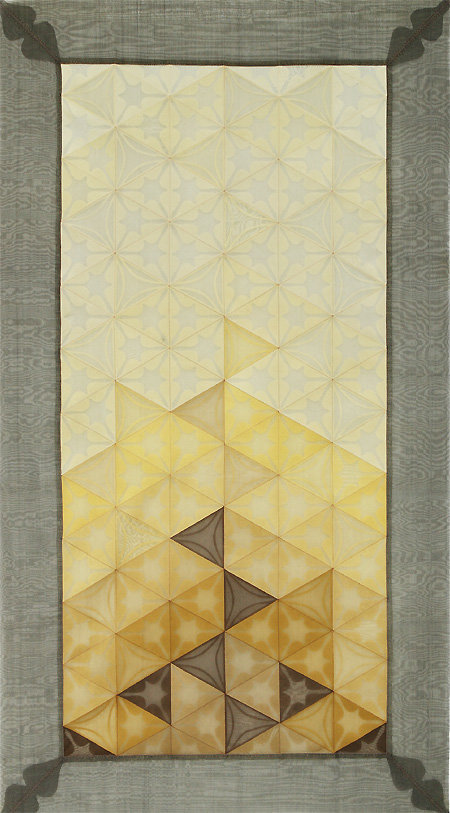Traditional flower patterns cannot be rivaled by modern designs
Traditional flower patterns cannot be rivaled by modern designs
Posted August. 01, 2019 07:43,
Updated August. 01, 2019 07:43


Jogakbo is traditional Korean patchwork intended to be used as a wrapping cloth. Triangle and square shaped pieces of fabric are sewn together to make a beautiful wrapping cloth.
The works of Lee Sun-hee displayed at her exhibition at the KDCF Gallery in central Seoul last month were different from the triangle and square shaped jogakbo that are familiar to many. Fancy jogakbo with flower patterns that can be seen at palaces or temples caught the eyes of the audience.
“Since I started traditional crafts in 2000, I’ve always thought I want to change the general perception that jogakbo is a handicraft only for ordinary people and it is something that can only be seen from the skirt of Heungbu’s wife,” said jogakbo artist Lee Sun-hee. For years, she thought about ways to create patterns by sewing together curved pieces of fabric, drawing countless sketches.
Suddenly, an idea hit her when she was looking at a 2016 leaflet from the National Palace Museum of Korea. It was a picture of flower patterned door of the Daejeokgwangjeon Hall at the Kirimsa Temple that gave her an idea. The flower patterns on the door, which were made by carving the wooden door, reminded her of jogakbo as the shapes repeated in pattern and each piece was attached to one another. “This is it. I want to apply it to jogakbo,” she thought. She headed to the Kirimsa Temple immediately.
“I saw the flower patterned door at dawn. So moving that it almost brought tears to my eyes. A man working there was opening the door. I told him I came all the way to see the door and asked him to shut the door again,” she said. “The sunlight shining through window-paper moved me once again.”
“Flower patterns were used only for the throne halls of the five grand royal palaces of the Joseon Dynasty and important buildings at temples while geometric patterns like ‘ah (亞)’ or ‘man (卍)’ were used for ordinary people’s houses,” said Lee. Like origami, Lee sew mountain and lips shaped pieces of fabric together to create ume flowers and turtles to one’s amazement.
“Korean traditional flower patterns stand comparison with any modern designs in the world,” she said. “I wanted to encourage young people with my design and let them know that there’s a future in modernizing traditional designs.”
Seung-Hoon Cheon raphy@donga.com







